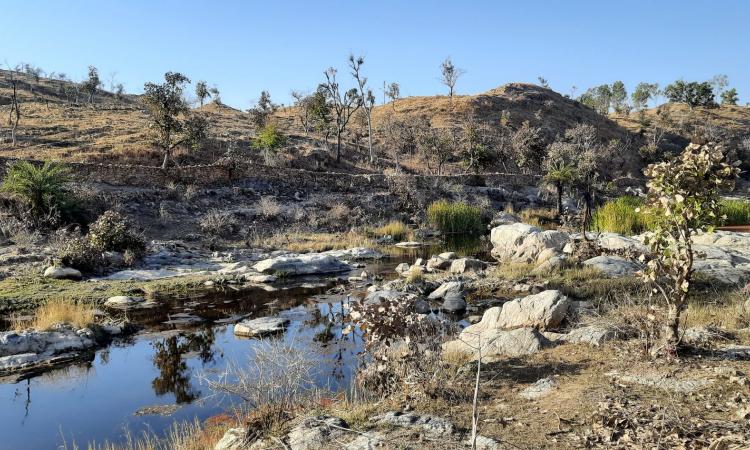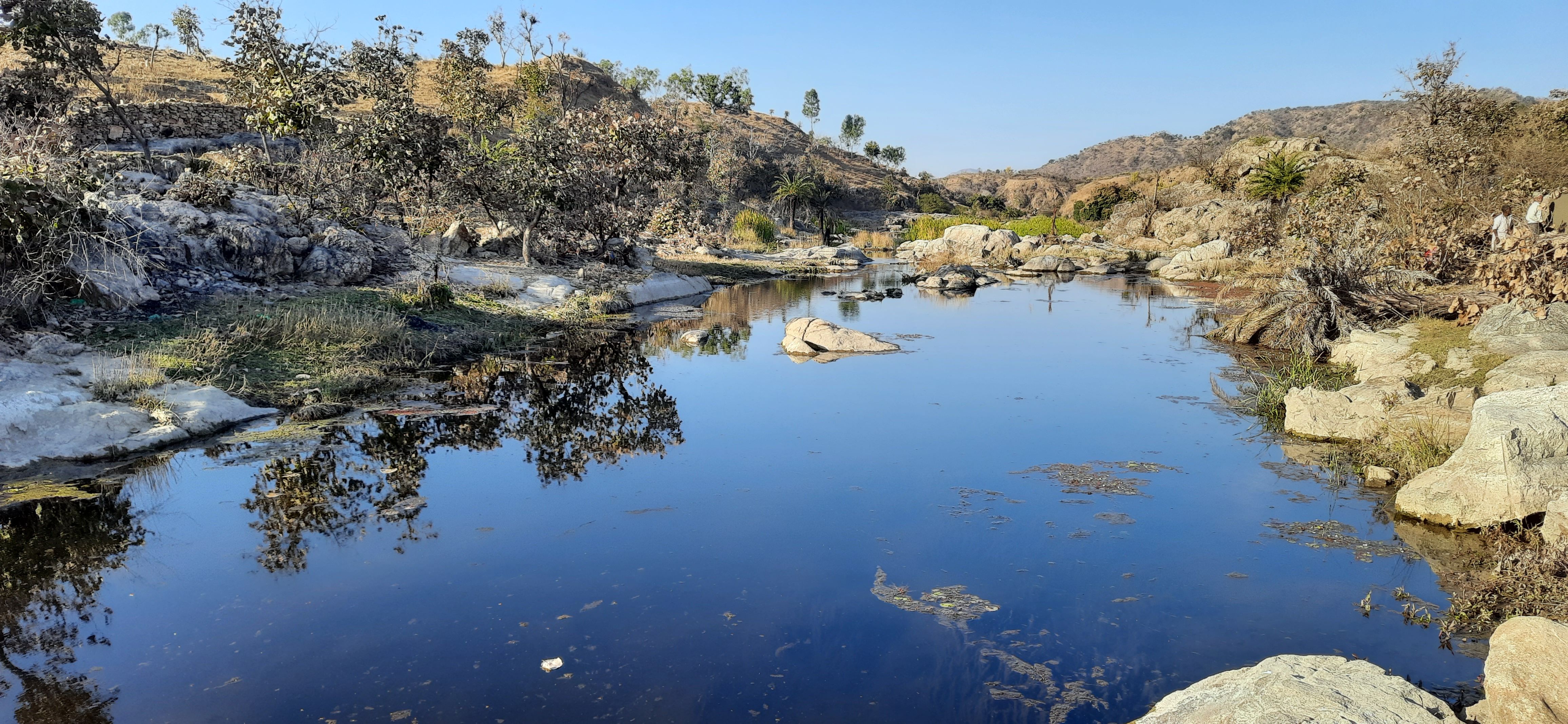
Sagdi ka Guda, a revenue village in Gogunda block of Udaipur district, has 114 households and a total population of 429 people, with the majority of the population (88%) belonging to the Gameti and Nath communities. Agriculture, livestock rearing, and wage labour are the mainstays of the communities, with 65% of the households migrating seasonally to nearby cities for work. About 101 households actively undertake MGNREGS work for 65 days on average. The village has about 148 acres of land, and all the families have landholdings.
The commons, including 91 acres of pastureland and the water stream flowing in the village, are the lifeline of the community. Understanding that managing their commons was the key to improving livelihoods in the village, the community came together under the Jay Bayan Maa Charagah Vikas Evam Prabandhan Samiti in 2016.
The first step towards better management of the pastures was their clear demarcation and protection. They divided the pastures into two parts: Mara Mangra, the closed 42-acre plot for restoration, protected with a boundary wall, and an open pasture of 49 acres on the other side of the stream for open grazing throughout the year.
Once that was achieved, the community started restoring the pastures through soil and moisture conservation and regeneration measures, leveraging MGNREGS and other funds. To further improve water availability and recharge, two anicuts were built two kilometres apart on the stream that flows just below the pastures.
While putting in efforts to restore the commons, the village institution also put in place rules and byelaws so that the resources are sustainably used. Rules like allowing only cut and carry practice after the monsoon, a nominal fee of INR 20 per sickle per day, and a total ban on open grazing on protected areas were implemented.
Gradual sanctioning mechanisms, such as giving warnings at first and later imposing fines if anyone broke the rules, were put in place to ensure that everyone understood and abided by the rules laid down. The revenue collected from this is deposited in the Village Institution bank account and used for further restoring the land and water commons or in the common interest of the people.
The impact of the efforts has grown manifold. Today, the pastures support 90% of the households with fodder, seeds, leaves, and dry wood, while the stream is a direct source of water for about 60% of the agricultural land in the village. The pastures, after being degraded and overgrazed, have turned into lush commons, providing fodder worth about INR 2 lakh annually.

The restoration of pastures improved the overall water recharge in the area, and the construction of anicuts further created a water storage potential of 5000 TCM (thousand cubic metres) and substantially improved water availability in the eight open wells and borewells situated near the river and pastures. This has improved water availability for critical irrigation, and communities can now also take an assured second crop, with several farmers taking the summer crop too.
The enhanced fodder and water availability, as well as interventions such as pucca flooring for goat sheds, have helped 100+ marginal households increase their livestock holdings, bolstering their earnings from the sale of livestock. The incomes from MGNREGS and other wage labour have further improved household incomes.
The community has faced several roadblocks and continues to do so, especially violations of rules for accessing the closed plot. Time and again, members of the village and neighbouring areas have entered the closed plot for open grazing and, at times, even destroyed the boundary wall.
But the community swiftly deals with such issues, using the social fabric of the village to help the erring families rectify their mistakes. Such incidents have diminished substantially now, and the village institution is watching to continue addressing such issues swiftly in the future too.
"Quick action against violations of rules is important. This reinforces the beliefs of the people in the institution. We work collectively and engage with all, including erring families, to arrive at decisions, strengthening collective action," says Mol Singh, the chairperson of the village institution.
Note: All images are by FES
/articles/restoring-village-commons-securing-prosperity